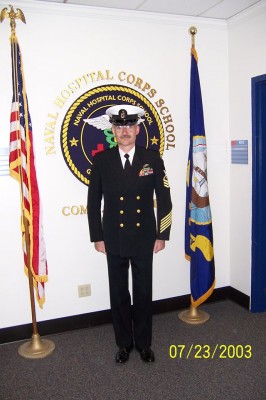EL PASO — When Ivan Lopez opened fire at the Fort Hood Army base in Killeen, TX on April 2, the second shooting rampage there in a five-year period, the nation watched newscasts in disbelief.
“How was he not in some database for being at risk of PTSD and was able to buy a handgun?” asked “John”, who wishes to remain anonymous. John is a Fort Bliss soldier who was at Fort Hood, right next-door to the first incident in 2009.
Lopez was in the process of being diagnosed with and treated for PTSD but the military’s notoriously slow processes prevented him from receiving immediate and proactive treatment.
Fort Hoot shooter, Ivan Lopez, in the field (Source: Facebook page).
Maj. Nidal Malik Hasan, the shooter in the 2009 tragedy, killed 12 people and wounded 31 others. Hasan was not suffering from PTSD. His motives were related to Islamic extremist views.
“I knew a physician who was shot and it’s a shame that he had to die,” John said somberly. Although there is no way to prevent any and all violence or incidents like these two shooting rampages, it is hard to deny the fact that this more recent incident could have been avoided if the shooter had received the psychiatric help he clearly needed.
“The problem is the delay in diagnosis and treatment,” said John. Many soldiers return from traumatic experiences in the war-torn Middle East to little or no assistance with assimilation and coping.
If soldiers suffering from PTSD received speedy and comprehensive assistance the risk of violent incidents would be greatly reduced. The military should be working harder to improve the care for returning soldiers.
There is a lack of a sense of urgency when dealing with soldiers suffering from PTSD. This mental disorder is defined as a type of anxiety disorder. It can occur after you have gone through an extreme emotional trauma that involves the threat of injury or death.
There is an extensive list of symptoms for the disorder, several of which make day-to-day living almost impossible: flashback episodes in which the event seems to be happening again and again; negative thoughts or feelings of hopelessness; being unable to sleep and experiencing constant guilt; experiencing symptoms of anxiety.
There is such a lack of understanding of what this disorder means and a lack of awareness of its existence throughout this nation.
I have witnessed the suffering that PTSD causes in an individual. My father endured the pains of this disorder for a very long time before he was able to gain stability and he still deals with certain consequences of combat trauma to this day.
When I was 13 years old my father (a Naval corpsman) told me that he was going with the battalion of Marines he had been stationed with to Kuwait, at the time I didn’t realize he was going into an extremely dangerous combat zone.
Senior Chief Petty Officer Edwin Grant returning from his first tour in Iraq at the beginning of the war. (Photo courtesy of Rebecca Grant)
My father wrote the following, remembering the deaths he saw first hand on March 23, 2003:
“It’s been 11 years since the carnage of An Nasiriyah with my brothers in Regimental Combat Team 2. However, the memories are vivid and indelibly burned into my brain as clear as the day we found ourselves washing down our gear in Kuwait getting ready to ride LCAC’s back to the amphibs.
“Most of us had no idea how different life would be after combat. We lost 18 incredibly brave, heroic Marines that day, Cline, Nixon, Jordan, Pokorney, Bitz, Fribley, Buesing, Reiss, Rosacker, Garibay, Gonzalez, Slocum, Hutchings, Burkett, Chanawongese, Gifford, Williams, Blair.”
My father has never been the same since the war and he will battle PTSD for the rest of his life.
He did not receive proper diagnosis or care for the disorder until more than a year after he returned from combat. This reactive rather than proactive treatment is a problem that the U.S. government and military needs to face and solve before more lives are destroyed by it and because of it like the life of Lopez and the lives of those he took this month.

